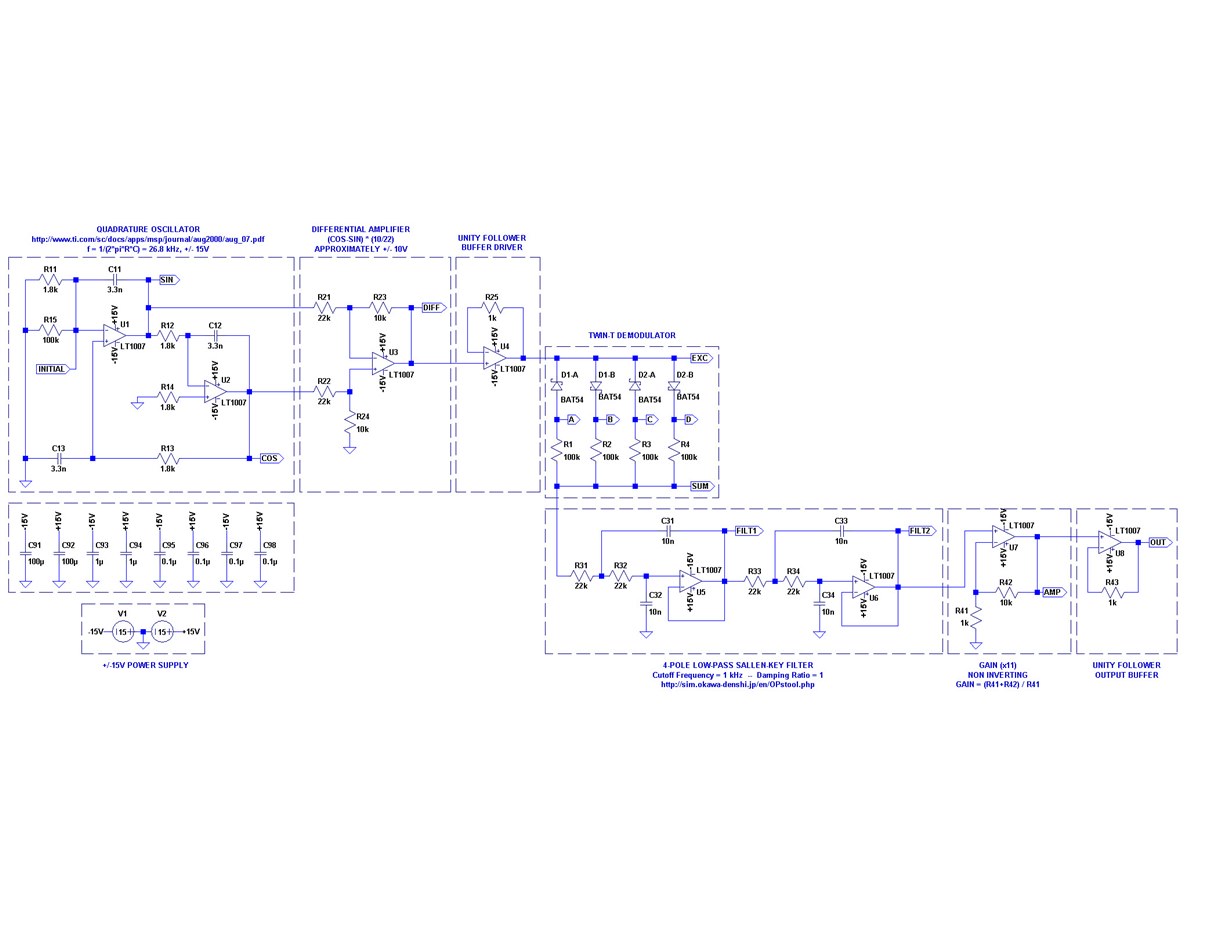We designed a circuit using two OPA4227 chips powered at +/- 15 V. The circuit diagram is as attached (U1-U4: OPA1, U5-U8: OPA2). We found both chips generated a lot of heat which caused significant drifts in voltage output (OUT). We measured the surface temperature on both chips, which is ranging from 95 - 105 Deg F. Output voltage seems to strongly be correlated to chip temperature variations.
Here are our questions:
- What's the normal operating temperature for the chip at +/- 15V.
- Do you see any obvious problems with circuit design?
- How to investigate for thermocouple effects if you think we might have that?


